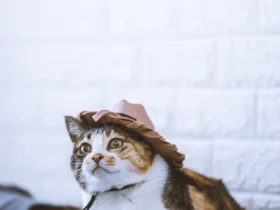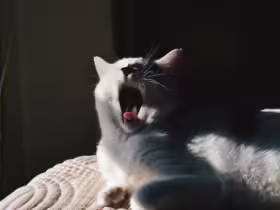Baking soda is a common household staple known for its versatility in cooking, cleaning, and odor control. Many pet owners wonder if it’s safe to use baking soda around cats, whether for cleaning, odor control, or even in their diet. This guide will provide a comprehensive look at the safety of baking soda for cats, including its potential benefits, risks, and best practices for use.
What is Baking Soda?
Baking soda, or sodium bicarbonate, is a chemical compound often used in baking as a leavening agent. It is also popular for its ability to neutralize odors, clean surfaces, and even as a mild abrasive.
Is Baking Soda Safe for Cats?
Ingesting Baking Soda
Baking soda is not inherently toxic to cats, but ingestion in large amounts can be harmful. Here’s what you should know:
- Toxicity Risk: Ingesting a small amount of baking soda may cause gastrointestinal upset, including vomiting or diarrhea. Larger amounts can lead to more severe issues such as electrolyte imbalances and alkalosis (a condition where the blood becomes too alkaline).
- Symptoms of Overexposure: Signs of baking soda toxicity in cats include excessive thirst, frequent urination, muscle tremors, and lethargy. If you suspect your cat has ingested a significant amount of baking soda, contact your veterinarian immediately.
External Use
When used appropriately, baking soda is generally considered safe for external use around cats, such as in cleaning products or as an odor neutralizer. However, there are some important precautions:
- Avoid Direct Contact: While baking soda itself is not toxic, it can be irritating if it gets on your cat’s skin or in their eyes. Avoid applying baking soda directly to your cat’s fur or skin.
- Ventilation: Ensure that any areas where baking soda is used are well-ventilated to avoid your cat inhaling the powder. Inhaling large amounts of baking soda dust can irritate a cat’s respiratory tract.
Baking Soda in Cat Products
Some pet products, such as cat litter and deodorizing sprays, contain baking soda. Here’s how to handle these products safely:
- Cat Litter: Many cat litters include baking soda to control odors. This is generally safe for cats, but it’s important to choose a litter with minimal dust to avoid respiratory issues.
- Deodorizing Sprays: Pet-safe deodorizing sprays containing baking soda are designed to be used in areas frequented by cats. Always follow the product instructions and allow the area to dry before allowing your cat to come into contact with it.
Using Baking Soda Safely Around Cats
1. Cleaning with Baking Soda
- Vacuum Thoroughly: If you use baking soda for cleaning carpets or upholstery, vacuum thoroughly to remove any residual powder. This helps prevent your cat from inhaling or ingesting baking soda.
- Rinse and Wipe: For surfaces where baking soda has been used, such as countertops or floors, rinse and wipe down the area to remove any residue.
2. Odor Control
- Placement: Place baking soda in areas where your cat does not have direct access. For example, use it in open areas like under furniture or in litter boxes, rather than in areas where your cat might walk on it.
- Avoid Excessive Use: Use baking soda sparingly and ensure it is well-dusted rather than forming large piles that could be easily ingested or inhaled.
3. Emergency Measures
- Seek Veterinary Help: If your cat accidentally ingests a large amount of baking soda or shows symptoms of discomfort, contact your veterinarian immediately. They can provide appropriate care and advice based on the situation.
Alternatives to Baking Soda
If you’re concerned about using baking soda around your cat, consider these alternatives:
- Pet-Safe Cleaners: Use pet-safe cleaning products that are specifically designed for homes with animals. These products are formulated to be safe and effective without the risks associated with baking soda.
- Natural Odor Absorbers: Consider using natural odor absorbers like activated charcoal or non-toxic enzymatic cleaners that are safe for pets.
Conclusion
Baking soda can be safe for cats when used properly, but it’s important to be mindful of potential risks associated with ingestion and inhalation. By following safety guidelines and using baking soda in moderation, you can minimize any risks and use it effectively for cleaning and odor control. If in doubt, opt for pet-safe alternatives and consult your veterinarian for advice tailored to your cat’s needs.
With the right precautions, you can keep your home clean and fresh while ensuring your feline friend stays safe and healthy.











Leave a Reply